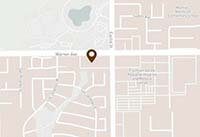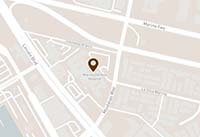Obalon Gastric Balloon Safety
Indications for use
The Obalon Balloon System (the “System”) is a swallowable intragastric balloon system indicated for temporary use to facilitate weight loss in adults with obesity (BMI of 30 – 40 kg/m2) who have failed to lose weight through diet and exercise. The System is intended to be used as an adjunct to a moderate intensity diet and behavior modification program. All balloons must be removed 6 months after the first balloon is placed.
Contraindications
The following contraindications apply to the Obalon Gastric Balloon System:
- Anatomical abnormalities or functional disorders that may inhibit swallowing or passage through any portion of the entire Gastrointestinal (GI) Tract.
- Prior surgeries that may have resulted in intestinal adhesions, narrowing of any portion of the digestive tract or any other condition that may inhibit passage through any portion of the GI tract.
- Persons whom have undergone any bariatric surgery procedure.
- Inflammatory and other pathophysiological conditions of the GI tract.
- Chronic or acute use of medications known to be gastric irritants or to otherwise alter function or integrity of any portion of the GI tract, including but not limited to NSAIDs and aspirin.
- Untreated Heliocobacter pylori infection.
- Patients who are unable or unwilling to take prescribed proton pump inhibitor medication for the duration of the device implant.
- Allergies to products/foods of porcine origin.
- Patients diagnosed with bulimia, binge eating, compulsive overeating, high liquid calorie intake habits or similar eating related psychological disorders.
- Patients with known history of structural or functional disorders of the stomach including, gastroparesis, gastric ulcer, chronic gastritis, gastric varices, hiatal hernia (> 2 cm), cancer or any other disorder of the stomach.
- Patients requiring the use of anti-platelet drugs or other agents affecting the normal clotting of blood.
- Pregnant or lactating women, or women with an intention to become pregnant.
- Known history of duodenal ulcer, intestinal diverticula (diverticulitis), intestinal varices, intestinal stricture/stenosis, small bowel obstruction, or any other obstructive disorder of the gastrointestinal tract.
- Known history of irritable bowel syndrome, radiation enteritis, or other inflammatory bowel disease, such as Crohn’s disease.
- Patients taking medications on specified hourly intervals that may be affected by changes in gastric emptying, such as anti-seizure or anti-arrhythmic medications.
- Alcoholism or drug addiction.
Warnings
- To minimize radiation, during administration, if fluoroscopy is utilized instead of digital x-ray, monitoring of the actual swallow process is not required to ensure successful placement and is not recommended. Radiation exposure should be minimized to the lowest possible level during confirmation after swallow and balloon inflation. The balloon must not be inflated until the capsule can be clearly identified to be in the stomach.
- The risk of balloon deflation is significantly higher with balloons that are left longer than 6 months.
- Death due to intestinal obstruction is possible and has been reported with other intragastric balloons.
- Patients reporting a loss of fullness, increased hunger, and/or weight gain should be examined by radiograph, as this may be a sign of balloon deflation. Additionally, any increase in nausea, vomiting and/or cramping after initial symptoms have subsided may indicate a deflated balloon. Patients should be evaluated by Radiograph and Endoscopic visualization might be required if the state of inflation cannot be determined radiographically. In the event of balloon deflation, the balloon should be removed as soon as possible.
- Each patient should be monitored closely during the entire device therapy period in order to detect the development of possible complications. Patients should be instructed regarding symptoms of deflation, gastrointestinal obstruction, ulceration, esophageal injury, and other possible complications that could occur, and should be advised to contact their physician if these symptoms worsen over time or persist for more than 24 hours.
- Do not place more than 3 balloons in one patient across the 6-month therapy cycle.
- Do not place more than one device simultaneously. There should be no less than 14 days between Balloon placements. Risk of intolerance due to too much initial volume may occur.
- Endoscopic retrieval might be required in the event that a capsule is swallowed, but not completely inflated. A foreign body retriever should be immediately available in the endoscopic suite.
- Patients must not use gastric irritant medications including but not limited to NSAIDs or Aspirin during use. This can lead to an increase in ulcerations and gastric bleeding events while balloons are in residence.
- Do not place balloons if the patient expects to permanently reside at an elevation greater than 4000 ft. from balloon placement elevation or lower than 2500 ft. from the balloon placement elevation. The risk of balloon deflation increases with significant change in elevation during balloon use.
- The pressure gauge on the Dispenser must be monitored continuously to ensure there are no leaks in the system during inflation. All decision points require that prior to moving to the next step, that the measured value is stable and does not change more than 0.3 kPa in a 30 second period. Any value provided that is not stable or unexpected could indicate that there is a leak in the closed loop system.
Precautions
- The Obalon Balloon System procedure should only be conducted by physicians specifically trained to perform the Obalon Balloon System procedure.
- Prior to usage of the Obalon Gastric Balloon System, patients should have previously attempted to lose weight unsuccessfully using a medically supervised or non-medically supervised diet.
- Patients using medications known to affect weight or who are undergoing chronic steroid immunosuppressive therapy should not use the treatment.
- Patients should be advised not to undertake scuba diving or travel in an unpressurized airplane cabin as these activities might cause the balloons to deflate.
- The safety and effectiveness of the Obalon Balloon System has not been established in patients with:
- Type 1 diabetes.
- Type 2 diabetes requiring insulin or other hypoglycemic oral agents.
- Uncontrolled hypothyroidism or Cushing’s disease or syndrome.
- Severe, unstable/uncontrolled medical conditions of major organ systems.
- Patients with known cardiovascular disease such as recent acute coronary syndrome or clinically unstable ischaemic cardiac disease including evolving or ongoing myocardial infarction, typical angina at rest, recent coronary intervention, recent deterioration of ECG, laboratory or clinical findings.
- Poorly controlled hypertension (≥160 mm Hg Systolic and ≥100 mm Hg Diastolic).
- End stage renal disease or requiring hemodialysis within the past 6 months.





